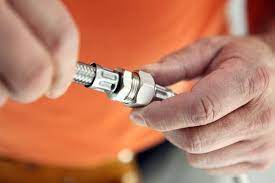In the realm of home maintenance, few issues are as potentially damaging and costly as water leaks. One of the primary contributors to leaks is the stress placed on pipes, which can lead to cracks, bursts, and significant water damage. This article aims to provide a comprehensive guide on how to reduce stress on pipes, ultimately helping homeowners prevent water leaks and safeguard their property.
Understanding Pipe Stress
To effectively mitigate pipe stress, it’s crucial to delve into the various factors that contribute to it. Pipes experience stress due to temperature fluctuations, water pressure variations, and improper installation practices.
These stressors can collectively weaken the structural integrity of pipes over time, making them more susceptible to leaks and other issues.
Proper Pipe Insulation
Insulating your pipes is a fundamental strategy to minimize stress caused by temperature changes. When water temperatures fluctuate, pipes expand and contract, leading to stress.
By installing insulation, you create a barrier that helps regulate the temperature of the water within the pipes, preventing excessive expansion and contraction.
This proactive measure not only reduces stress but also enhances energy efficiency.
Maintaining Consistent Water Pressure
High water pressure is a common culprit behind stressed pipes. Plumbing systems are designed to handle specific pressure levels, and exceeding these limits can result in significant stress on the pipes.
Install pressure regulators at key points in your plumbing system to maintain a consistent and safe water pressure level.
This simple addition can significantly reduce the risk of damage to your pipes and extend their lifespan.
Regular Inspection and Maintenance
Frequent inspections of your plumbing system can help identify potential stress points before they escalate into leaks.
Look for signs such as corrosion, rust, or visible damage. Addressing minor issues promptly can prevent major problems down the line.
Regular maintenance tasks, including checking for leaks, tightening loose fittings, and lubricating moving parts, contribute to a healthier plumbing system overall.
Avoiding Clogs and Blockages
Clogs and blockages increase pressure within pipes, contributing to stress. Implement preventive measures such as using drain screens, disposing of waste properly, and scheduling regular drain cleaning to keep pipes clear.
This not only reduces stress but also improves the overall efficiency of your plumbing system.
Proper Pipe Support and Alignment
During the installation process, ensuring that your pipes are adequately supported and aligned is crucial. Proper support prevents sagging and misalignment, reducing stress on the pipes and promoting longevity.
Consider using hangers, brackets, or straps to secure pipes in place and distribute the weight evenly. This simple step can go a long way in preventing stress-induced damage.
Weatherproofing External Pipes
External pipes are particularly vulnerable to the elements. Protecting them from harsh weather conditions is essential for minimizing stress. Insulate outdoor pipes and seal any gaps or cracks in the exterior to shield them from extreme temperatures.
This not only prevents stress but also guards against freezing, which can lead to pipe bursts in colder climates.
FAQs
Q1: How can I tell if my pipes are stressed?
A1: Look out for signs such as unusual noises, leaks, or visible damage. Regular inspections can help identify stress points before they become severe.
Q2: Can I reduce stress on pipes without professional help?
A2: Yes, routine maintenance tasks like insulating pipes, checking for leaks, and regulating water pressure can be done by homeowners. However, professional assistance is recommended for complex issues or installations.
Q3: What role does water pressure play in pipe stress?
A3: High water pressure can strain pipes, leading to stress and potential leaks. Installing pressure regulators helps maintain a safe pressure level, protecting your plumbing system.
Q4: Are there specific pipes more prone to stress?
A4: Older pipes, those with inadequate support, or improperly installed pipes are more susceptible to stress. Regular maintenance is crucial for all types of pipes to ensure longevity.
Q5: How often should I inspect my plumbing system?
A5: Conduct routine inspections at least twice a year. Additionally, check after extreme weather events or if you notice any unusual signs like decreased water pressure. Early detection can prevent major issues.
Q6: Can insulating pipes prevent stress in all climates?
A6: Yes, insulation is beneficial in both hot and cold climates. It helps regulate water temperature, preventing expansion and contraction that can stress the pipes and ensuring year-round protection.
Q7: What’s the importance of aligning pipes correctly?
A7: Proper alignment ensures even distribution of pressure, preventing localized stress points. This contributes to the overall stability and longevity of the plumbing system, reducing the risk of leaks.
Conclusion
Reducing stress on pipes is a proactive approach that homeowners can take to prevent water leaks and avoid costly damage. By understanding the factors contributing to stress and implementing preventive measures, individuals can ensure the longevity and efficiency of their plumbing systems, promoting a stress-free and leak-resistant home environment. Regular inspections, proper insulation, and thoughtful installation

A group of home improvement enthusiasts and bathroom design experts, combines in-depth knowledge and a shared passion to deliver engaging, informative content that guides readers through the world of bathroom innovation and style.

Leave a Reply